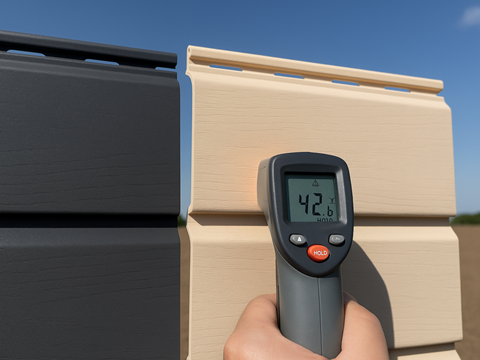
Delta Tecnic is utilizing cool pigments to resist infrared radiation and lower a plastic part’s thermal increase under solar exposure by up to 30%, thus preventing deformation and minimizing consumption.
Solar radiation, especially infrared light, is said to be the ‘main factor’ driving temperature increase in plastics, with darker colours causing temperature increases of over 20 degrees in minutes.
Polymers are said to reach temperatures of 75 to 80 degrees in extreme conditions, at which point they run the risk of deformation, loss of mechanical properties, and a shortened lifespan.
While manufacturers have historically avoided this problem by limiting their use of darker plastics for outdoor applications, instead relying on lighter colours, Delta Tecnic explains that this limits the possibilities of product design and sometimes falls short of market needs.
Its solution is to utilize cool pigments, which apparently absorb less infrared radiation and limit thermal increase, even with ‘intense’ colours. Preventing deformation expands the life span of a plastic part, reducing the need to replace components and therefore resource consumption.
While these pigments can be expensive by themselves, Delta Tecnic has sought to balance thermal efficiency and cost by developing its own methodology to combine cool and conventional pigments.
Similarly, it customizes its plastic parts to suit the needs of individual customers. It requests the uncoloured base compound and designs a specific pigment formulation, which then undergoes a ‘rigorous’ Build Up Test in the Delta Tecnic laboratory – i.e., it is exposed to an infrared irradiation source to simulate sunlight, with the component’s temperature recorded over time by a ‘high-precision’ temperature probe.
From here, the formulation’s thermal behaviour can be compared with conventional alternatives, and the price can be adjusted in line with the client’s requirements. The company claims that this makes its solutions up to 30% more cost-effective than market competitors.
This is set to unlock more intense and fully customizable colours, helping manufacturers differentiate their product designs from those of their market competitors.
Back in 2022, Ampacet unveiled UVProtect, a series of long-lasting UV stabilizers designed to extend the life of polyolefin-based plastics used in outdoor applications. Intended to protect against sun exposure and extend the life span of plastic parts, the stabilizers are designed to prevent discolouration and cracking while preserving elongation and tensile strength.
Since then, Chapelton’s Sustaina range of packaging papers and boards has adopted utilizes Nature Coatings’ black pigment made from wood waste, forming what is described as the ‘world’s first’ carbon-free, black pigmented, and barrier-coated paper and board.
On the other hand, a study by the University of Leicester and the University of Cape Town exposed plastic waste to the elements and found that brightly coloured plastics broke down into microplastics at a faster rate than those in plainer colours.
If you liked this story, you might also enjoy:
The ultimate guide to the Packaging and Packaging Waste Regulation in 2025
How are the top brands progressing on packaging sustainability?
Everything you need to know about global packaging sustainability regulation in 2025
The key to increasing the use of reusable packaging in supermarkets


















No comments yet